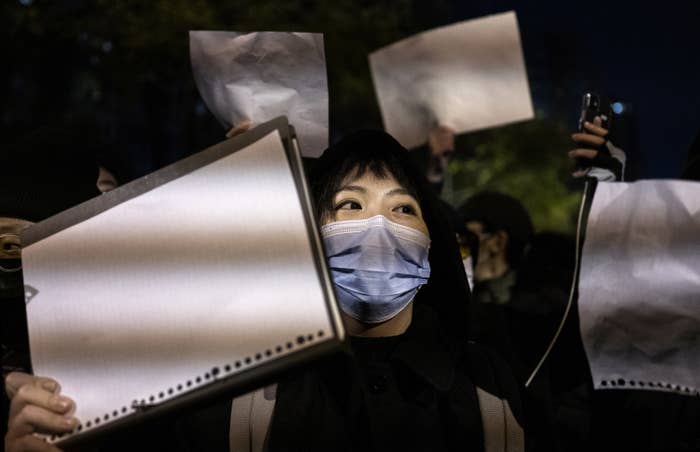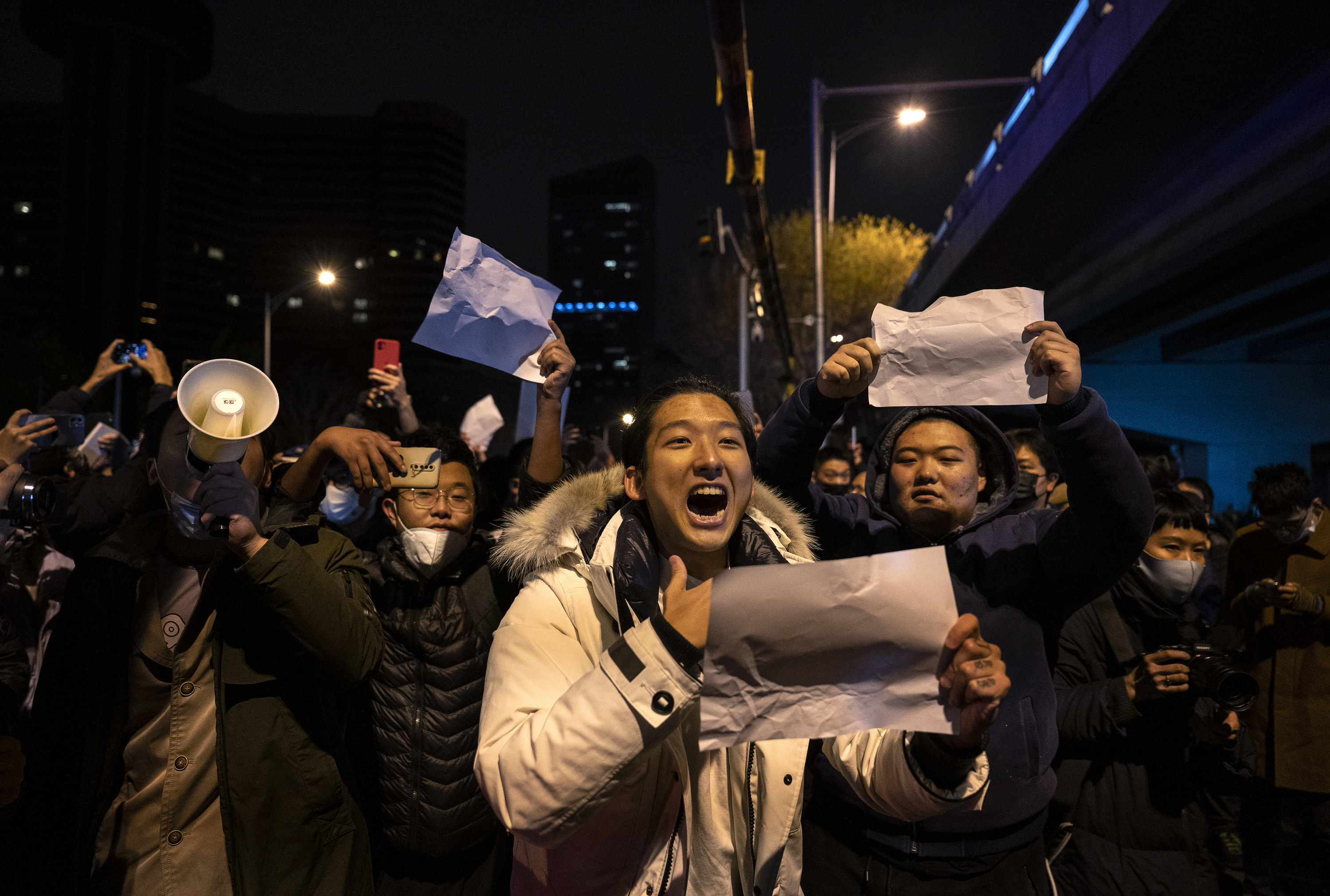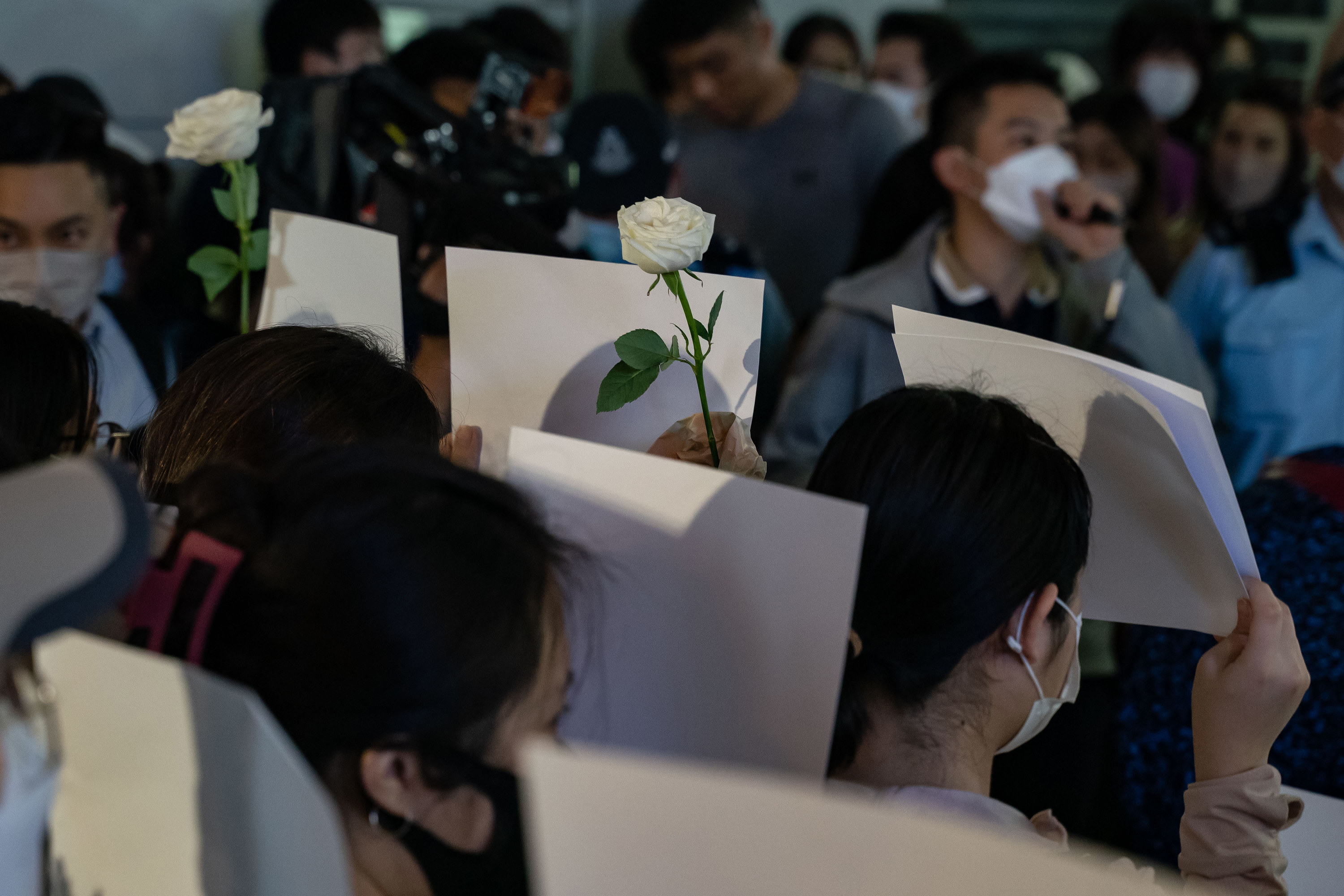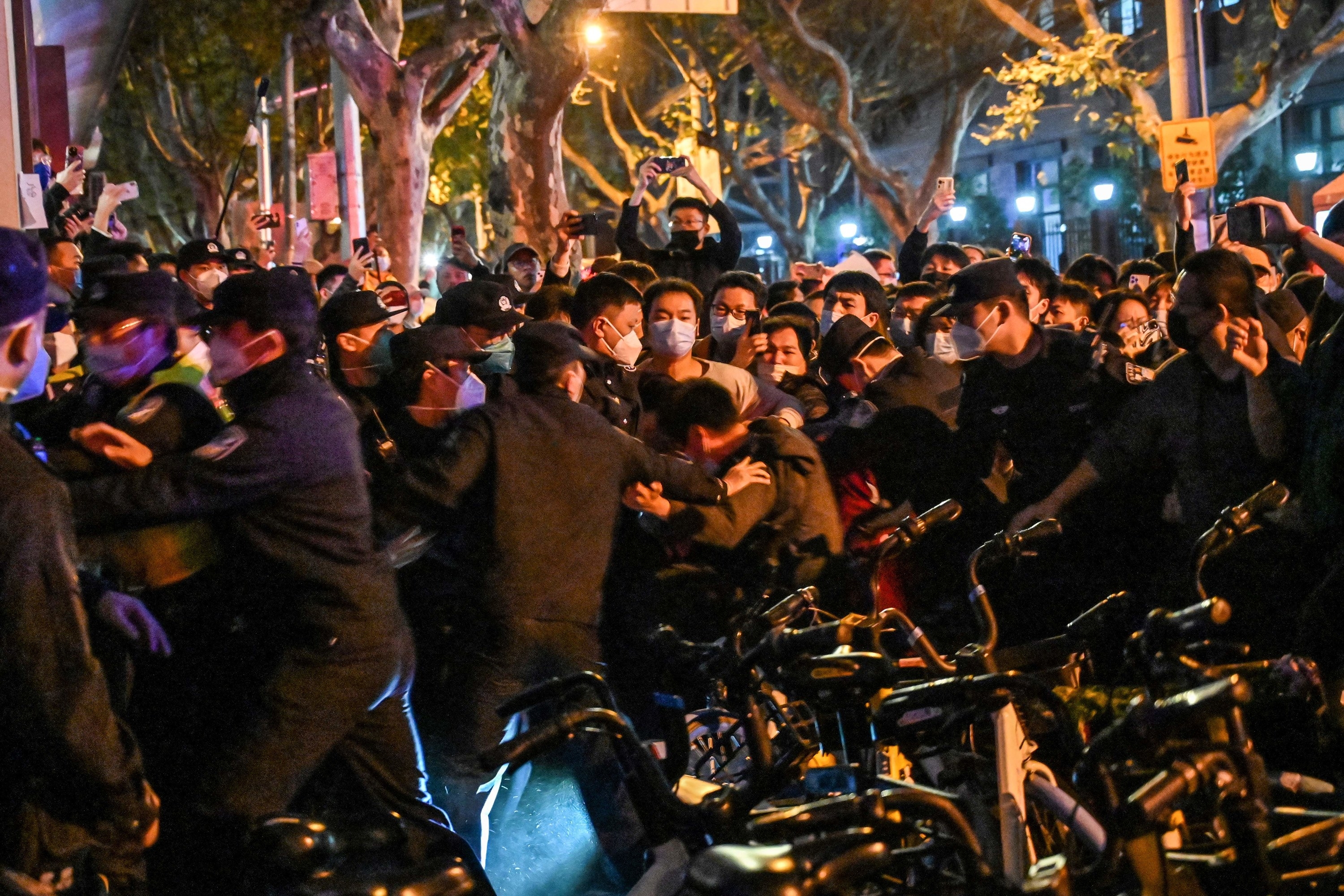
Sparked by a deadly fire in Xinjiang and fueled by harsh ongoing COVID restrictions, protests erupted in cities across China over the weekend in a rare display of public anger toward the government.
What began as demonstrations over a fire in an apartment building in Ürümqi, Xinjiang, on Thursday — which many believe were made deadlier due to strict COVID prevention measures — has bubbled over into widespread discontent with the government's "zero-COVID" policy.
Demonstrators in Shanghai, Beijing, Wuhan, and other cities took to the streets and faced down police officers, demanding an end to lockdowns and, in some cases, directly voicing their opposition to the Chinese government and President Xi Jinping.
The wide-scale protests are remarkable for a country where free speech is highly regulated and heavily punished, but also because of how different segments of the population have been so unified by the shared frustration of the government's zero-COVID approach.
"People have been incredibly patient with lockdown measures but authorities must not abuse emergency policies," Amnesty International Deputy Regional Director Hana Young said in a statement. "These unprecedented protests show that people are at the end of their tolerance for excessive Covid-19 restrictions."
Here's what you need to know about the protests.
Why are people protesting?

Although most of the world is now learning to live with the coronavirus, the Chinese government has continued to enforce a "zero-COVID" policy, relying on a system of rigorous testing and contact tracing, as well as broad, severe lockdowns and quarantines in response to an outbreak of any size.
This approach has confined millions of people to their homes for long periods of time, leaving them unable to access food and medical supplies. Unemployment has increased, and China's slowing economic growth has raised alarm.
The frustration over the government's severe COVID preventive measures has led to protests in recent weeks. But a deadly fire in an apartment building in Ürümqi on Thursday became the flashpoint for demonstrations across the country as people expressed their outrage against oppressive COVID rules.
Ürümqi, a city in the autonomous territory of Xinjiang where the Chinese government has built a vast system of prisons and detention camps to detain more than 1 million Uyghurs and other Muslim minorities, has a population of nearly 4 million people. The city has been on lockdown since August.
The apartment fire killed at least 10 people, including three children, and injured nine others, officials said. Videos circulating on Chinese social media platforms show rescue efforts apparently being delayed and escape attempts thwarted by barricades that residents say were put up as part of the COVID measures.
Protests quickly erupted in Ürümqi as people confronted police officers and demanded an end to lockdowns. Over the weekend, demonstrations took place elsewhere in China, including at universities, and in cities abroad.

Although smaller, more localized protests do take place in China, the government's zero-COVID measures have created "a unifying grievance and a shared experience across the population," Rory Truex, an assistant professor of politics and international affairs at Princeton University who studies Chinese politics, told BuzzFeed News.
"That grievance can be directly attributed to the central government, which often doesn't draw the ire of citizens. Most of the time we see protests directed at local actors," Truex said.
What do the protests look like?

Demonstrations have taken place in at least a dozen cities in China and abroad. The scale of these protests has been notable, but so are the demands from protesters.
Above all, protesters are calling for an end to draconian COVID preventive measures. But some have gone further, demanding the toppling of the government and Xi's resignation.
"This is unheard of in this era," Minxin Pei, a professor of government at Claremont McKenna College, told the New York Times. "It reflects a great deal of frustration with the COVID policies. People are just tired."
Other protesters have also voiced their broader support for freedom of speech in the country.
"Everyone thinks that Chinese people are afraid to come out and protest, that they don’t have any courage," an unnamed Uyghur protester in Shanghai told the Associated Press. "Actually in my heart, I also thought this way. But then when I went there, I found that the environment was such that everyone was very brave."
A close up。Sorry abt night film video quality. The sad boy weeping, arguing in front of a police. He said “do we have future?We are also college graduates.We have master’s degree. We don’t have future”unsure Where and context. listen to real Chinese voice#ChinaUprising protest
Truex said the protests have been so remarkable because of who it has brought together.
"It's very unusual to kind of see this cross-societal coalition coming together," he said. "Protests are occurring across China in a lot of different spaces.
"When the initial Xinjiang camps and detainments were happening years ago, you didn't see a whole lot in a way of solidarity between the Han population and the Uyghur population," Truex added. "I think it is noteworthy that it was a fire in Ürümqi that triggered this recent wave. And, you know, that's heartening in some respects, and something that the Communist Party is wary of — is that the grievances coming out of Xinjiang make their way into the broader population."
Facing the potential of harsh punishment, protesters have also resorted to creative methods of expression on the streets. Many held up blank sheets of paper as a symbol of their defiance against the government's intolerance of dissent.
"The white paper represent everything we want to say but cannot say," a 26-year-old protester named Johnny told Reuters.
Online, social media users sharing articles about the fire have dodged censors by repeating "safe" words like "good," "right," and "support." Videos of the protests have also evaded heavy-handed censors and spread far beyond Chinese social platforms.
How has the government reacted?

A massive police presence in areas where demonstrators gathered over the weekend appeared to have tempered protests on Monday. Police in Shanghai and Beijing also increased surveillance of residents, stopping people on the street and searching their phones, Reuters reported.
And video on social media from Sunday shows police attempting to disperse protesters, unleashing pepper spray on crowds. Arrests have also been reported in several cities.
A BBC journalist was also arrested on Sunday while covering protests in Shanghai. The news outlet said in a statement that it had not received an explanation as to why its journalist, Ed Lawrence, was arrested, "beyond a claim by the officials who later released him that they had arrested him for his own good in case he caught COVID from the crowd."
Officials in Ürümqi said on Saturday that they would relax COVID preventive measures "in stages" as protests heated up. But it's unclear if Xi, who in October secured a third term as China's leader, can or will be compelled to change the country's approach to keeping the pandemic under control.
Truex said it's too early to tell whether the protests are the beginning of something much larger.
"I think people are becoming just exhausted by the level of control and the uncertainty in their day-to-day lives," he said. "It might be the case that zero-COVID has made people wake up a little bit about the kind of broader repressive nature of the system, at least as it is under Xi Jinping."
